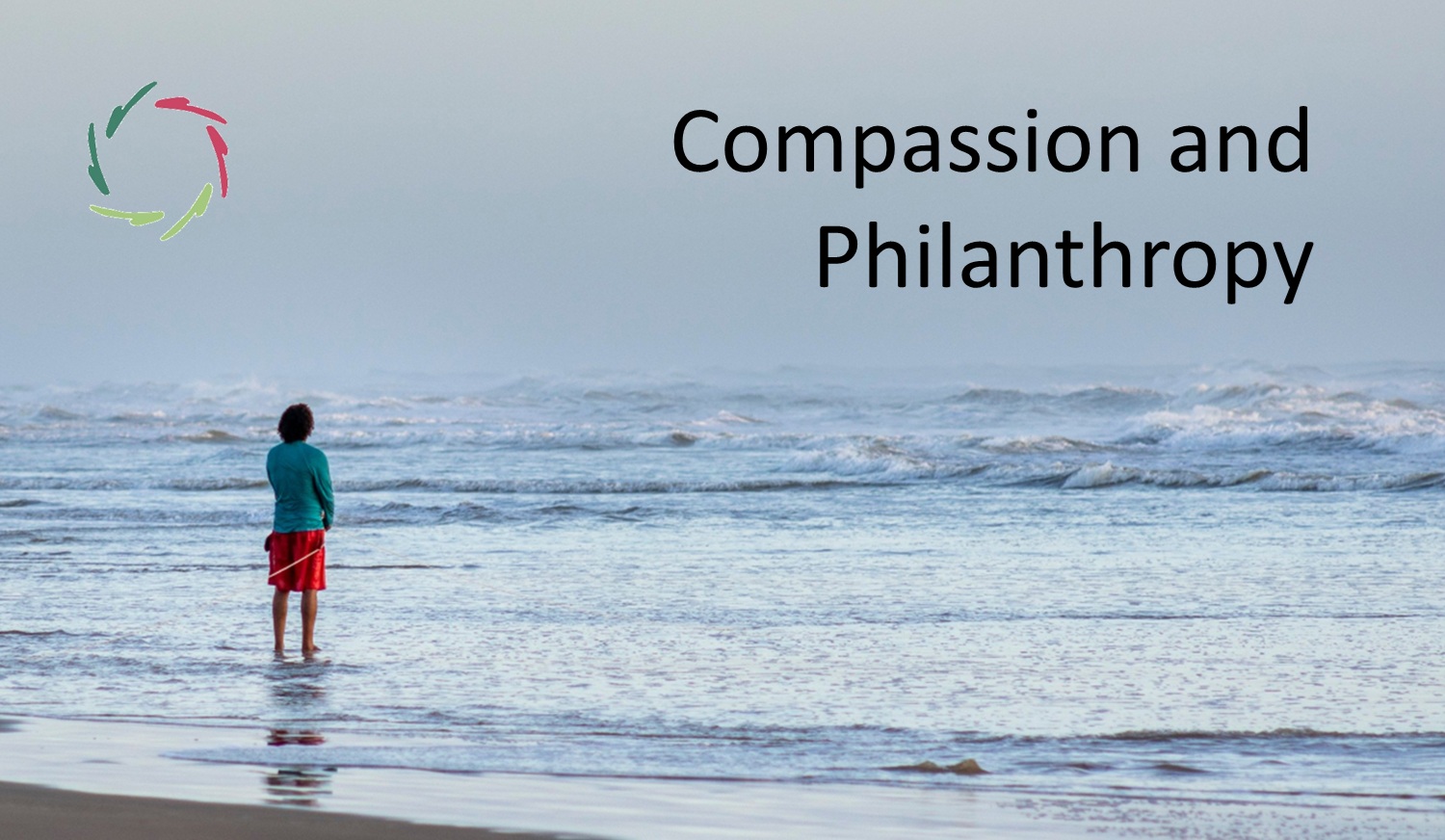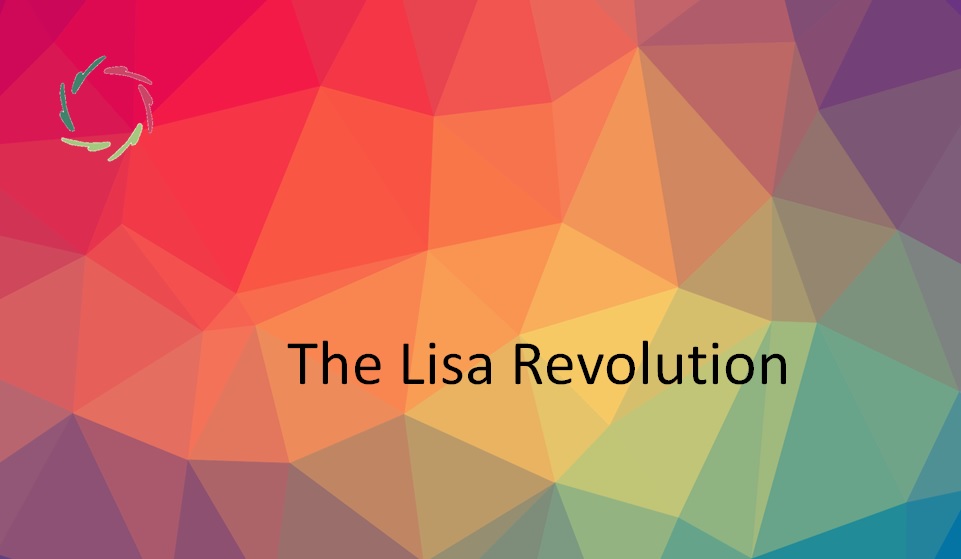Compassion and Philanthropy

If both are genuine, then they are obviously linked. Delving deeper, there is more to discover.
Before diving in, it’s important to note that this is not about misuses of philanthropy, such as when it is employed to gain undue influence, control, or power. Such actions do not align with the true essence of philanthropy. Instead, this is about authentic philanthropy, where the motivation is to give without expecting a return — guided by the intent to alleviate suffering and foster inner growth. In short, true philanthropy is Compassionate by nature.
Philanthropy is a profoundly interconnected landscape.
Only at the surface level do the actors – donors, fundraisers, nonprofits – have clearly distinct roles. Also, their trajectories differ.
More in-depth, they collide in getting things done for the good of people — thereby depending on each other. As human beings, of course, and in their Compassionate roles, they are equivalent.
Difference with the government and private sector
A key difference lies in the motivation of individual actors. In government settings, doing good is often driven by what looks favorable within a political sphere. Actions are taken based on what appeals to the majority or fits a specific agenda rather than stemming from genuine Compassion. Also, there is an obligation (called taxation) involved.
The private sector, on the other hand, is needs-driven, typically motivated by financial gain. This is often egotistic, as it seeks to meet demands for profit — even to the extent of becoming addictive. In many cases, needs are made while deeper needs aren’t met.
In contrast, Compassionate philanthropy stands apart as an essential diversification in the landscape. It represents pure giving without attachment, allowing for genuine human growth and transformation, free from the constraints of political or financial agendas.
Even so, in an ideal situation, these three – government, private sector, and philanthropy – could come closer together, aligning in a shared effort for the greater good. But we’re not there yet. Compassionate philanthropy is crucial as the connecting and guiding force that might lead toward this ideal future.
In true philanthropy, the motivation is Compassion.
Of course, status can be involved, as well as a warm-glow feeling. Maybe surprisingly to many, these are not incompatible with Compassion.
Nor the reverse — depending on the person. If the striving for feeling and status are ego-bound, then, indeed, there is incompatibility.
If they are lightly dealt with by the ego, then they are part of Compassion.
This may need some more explanation.
In short, Compassionately, the ego is there (necessarily) but doesn’t care (for itself as a separate agentive entity).
For instance, the status of a donor may be educational, inspiring others. It may be a means to be open and honest. Or it may be a factor in one’s motivation to do more. We’re all human ― donors also. Compassionate is how to deal with this, not how to strive to be superhuman.
The same goes for warm-glow feelings. Principally, they are perfectly okay. The importance here is not their presence but how one invites and enjoys them without being dependent on them. If they are part of who you are, then let them be welcome. In that case, they’re not a sign of egotism at all.
This also affects fundraisers.
These may like the warmth, the giving, and the Compassionate environment they work in.
Therefore, if donors have second thoughts about their motivations, this may reflect upon their personal attitudes toward fundraisers. When the donors are more challenging to convince, the fundraisers are more prone to burnout. Or they are just having a harder time convincing.
Philanthropy as motivation
‘Doing good’ — according to one’s insights, which may markedly differ from other people’s. Is this okay?
Compassion is two-sided: rationality and depth. It is of utter importance that philanthropists do their best to value both sides. The private sector and the government are not as focused on Compassion as philanthropy (should be). Here lies its main reason for existence. Of the three, it is (should be) the most humane.
Humanity is the motivation.
Inner reflection and motivation check
Philanthropists need to continuously engage in self-reflection, connecting deeply with the why of their actions. Are they driven by a genuine desire to alleviate suffering and promote inner growth for others? This self-awareness allows them to stay rooted in Compassion rather than getting swayed by superficial rewards.
In alignment with the AURELIS view, this self-reflection should not be punitive or judgmental. Instead, it invites philanthropists to see their motivations as part of a natural human spectrum. This way, they can cultivate a profoundly authentic form of Compassion.
Compassionate philanthropists engage not only as donors but as humans, connecting with other humans and recognizing that everyone may share a similar depth. Thus, the focus shifts from merely solving problems to fostering genuine human growth.
Embracing non-attachment
This requires letting go of control over outcomes and being open to the organic, sometimes unpredictable nature of giving. In AURELIS, growth happens from the inside out, and similarly, authentic philanthropic action should be non-coercive and invitational, allowing others to grow on their own terms.
Inner strength is invited, not enforced. This facilitates environments where others can flourish, trusting that people and communities will find their paths to growth when given the proper support.
A mutual exchange of humanity
Instead of seeing philanthropy as a one-sided act of giving, the AURELIS perspective encourages seeing it as a mutual exchange. Donors and recipients are interconnected at a deeply human level, both contributing to and learning from experience. Ideally, the act of giving fosters inner growth for both the giver and the receiver.
Philanthropists who embrace this view recognize that by offering help, they also invite themselves into a process of growth, thereby cultivating a Compassionate and interconnected landscape. By aligning their actions with these principles, they become catalysts of inner growth for the broader communities they aim to help and for themselves.
This may be their most significant reward and motivation.


